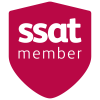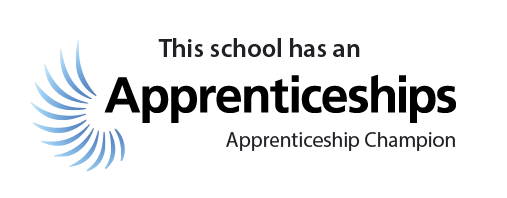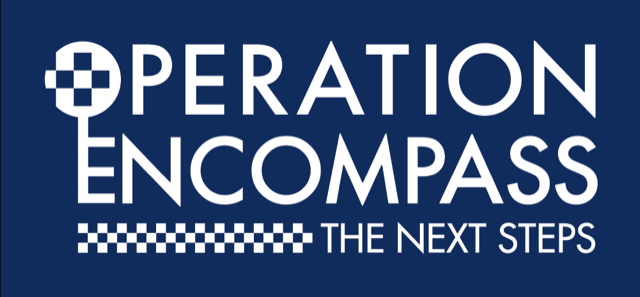Welcome to Design and Technology at LSA
Mr J Howard - Head of Design and Technology
Mrs D Ainsworth - Subject leader for Food, Graphics and Textiles
Mr J Speirs - Subject leader for Electronics, Engineering and Resistant Materials
Mrs S Hodgkinson - Enrichment and new initiatives co-ordinator
Mr B Kaluza - Teacher
Mr Whitehead - Teacher
Mr Gallagher - Teacher
Mr S Pinnock - Head Technician
Mr D Carr - Technician
Ms C Burke - Technician
Mrs C Hodge - Cover Supervisor
Design and technology prepares pupils to participate in tomorrow’s rapidly changing technologies. They learn to think and intervene creatively to improve the quality of life. The subject calls for pupils to become autonomous and creative problem-solvers, as individuals and as members of a team. They must look for needs, wants and opportunities and respond to them by developing a range of ideas and making products and systems. They combine practical skills with an understanding of aesthetics, social and environmental issues, function and industrial practices. As they do so, they reflect on and evaluate present and past design and technology, its uses and effects. Through design and technology, all pupils can become discriminating and informed users of products, and become innovators.
-
At key stage 3
During year 7 and 8 students rotate around six different subject areas within technology. This allows students to experience a range of different materials, industrial processes, tools, equipment and environments. Each area will take the learners through a project that enables them to develop and understand the main Subskills involved in design and technology at key stage 3. These are investigating and analysis, generating ideas, modelling ideas, planning, evaluating and testing, and making.
During year 9 the learner will be asked to become involved in the designing and making of products related to the book and film ‘The Hunger Games’. This will allow the learner the opportunity to be creative and innovative in solving the task. It will draw upon skills, knowledge and experience gained from years 7 and 8, and encourage them to be independent as well as work with others. The project is a fantastic opportunity for students to gain an understanding of how products are developed for markets.
-
At key stage 4
We offer BTEC in Engineering and GCSE in the following design and technology subjects:- Electronic Products, Food and Nutrition, Graphic Products, Resistant Materials and Textiles.
All of the above courses have a good to excellent track record of A*-C results. There is a link to the specification of each subject and examples of previous students work.
-
Electronic Products –
In y10 students design and make a stylophone and a USB powered Christmas tree, developing skills in CAD CAM and circuit theory. Students also carry out experiments on circuits with breadboard and multimeters.
Much of Y11 is spent on the Controlled Assessment which is 60 % of the GCSE. The remainder of the time is used for exam preparation.
The Controlled Assessment must be chosen from one of the categories set by the exam board, these change very few years.
Recently students have made projects such as Metronomes, National Lottery Number Generators, Snooker Score Boards, Locations Maps, PIN Number Decoders, House Alarms, Promotional Displays, Dice and Steady Hand Games.
-
Engineering –
Edexcel BTEC Level 1 / Level 2 First Extended Certificate in Engineering
This qualification is taught over 360 guided learning hours (GLH). It has a core, mandatory and optional specialist units. Learners must complete the two core units, two additional mandatory units, and a choice of optional specialist units to reach a total of 360 GLH.
|
Unit |
Core units |
Assessment method |
GLH |
Year 1 |
Year 2 |
|
1 |
The Engineering World |
External |
30 |
√ |
|
|
2 |
Investigating an Engineered Product |
Internal |
30 |
√ |
|
|
|
Mandatory units |
|
|
|
|
|
9 |
Interpreting and Using Engineering Information |
External |
30 |
|
√ |
|
10 |
Mathematics for Engineering |
Internal |
30 |
|
√ |
|
|
Optional Specialist units |
|
|
|
|
|
3 |
Health and Safety in Engineering |
Internal |
30 |
√ |
|
|
5 |
Engineering materials |
Internal |
30 |
√ |
|
|
6 |
Computer Aided Engineering |
Internal |
30 |
√ |
|
|
11 |
Electrical and Mechanical Science for Engineering |
Internal |
30 |
|
√ |
|
12 |
Engineering Design |
Internal |
60 |
|
√ |
Year 10 – Units 1, 2, 3, 5 and 6 – Students will complete five units, two of which are externally assessed via a PC based test. Students will manufacture (i) a wrought iron house number, (ii) a sheet metal scoop and (iii) a bird feeder. Students will also develop their skills in the use of CAD/CAM.
Year 11 – Units 9, 10, 11 and 12 – Students will complete the remaining four units.
- Units are a mixture of theory, practical and investigation work. Independent learning is encouraged throughout the duration of the course. All units except from Units 1 and 2 are internally assessed via a portfolio of work.
- Students will have the opportunity to represent the school at two major competitions: ‘F1 in Schools’ and the ‘Rotary Technology Tournament’.
Food and Nutrition – Nothing for this section as yet.
-
Graphic Products –
GCSE Design and Technology: Graphic Products enables students to design and make products with creativity and originality, using a range of graphic and modelling materials.
Students will be enthused and challenged by the range of practical activities possible. They will be encouraged to learn to use, understand and apply colour and design through images, to develop spatial concepts, and to understand graphic materials and their manipulation. They will design and make product(s) using graphic media and new technologies to prepare them for the world of work.
This course has 60 per cent controlled assessment in order to recognise the importance of practical work within this subject
-
Resistant Materials –
GCSE Design and Technology: Resistant Materials helps students develop the ability to design and make products with creativity and originality, using a range of materials and techniques.
This specification requires students to develop their knowledge of woods, metals, plastics and composite materials. Other materials may also be used and the use of new technologies is also encouraged.
This course has 60 per cent controlled assessment in order to recognise the importance of practical work within this subject.
During year 10 the students will complete a range of different projects enabling them to gain knowledge, understanding and experience of working with a variety of materials, tools and processes.
Year 11 will focus on the controlled assessment element of the GCSE project. This will require them choosing from 12 different design tasks. Once selected they will design and make a solution to the design task.
-
Textiles -
During the Textiles course, students are required to purchase an A3 folder, a revision guide and fabrics for their final product.
Year 10
The first term of year 10 involves confidence building and the importance of independent learning. Students will work with specialist textile materials, components and equipment (particularly the sewing machines) to produce; samples, a decorated and embellished cushion and a small skilfully fabricated denim bag, incorporating knowledge of fibres, fabrics and techniques.
During terms two and three the students will begin their controlled assessment. Design Briefs are set by AQA and the students can choose which one they wish to follow. We have found at LSA that making a corset/bustier top allows the students freedom to interpret their chosen design brief and sufficient challenge and rigour to attain the highest grades. The research, analysis, specification and presentation during this time will form the foundations of their work in year 11.
Year 11
Students will build on their textiles knowledge and skills and apply them to focus on their design work, planning, pattern construction and toile making. During term two the students will make, test and evaluate their products, completing their controlled assessment.
Term three is spent preparing for the exam. AQA provide a theme which the students will research in order to practice the design question, in addition they will learn revision methods and exam techniques.
Controlled Assessment 60%. Exam 40%.
We make a visit to the Clothes Show just before Christmas which helps the students formulate ideas for possible Textile or Fashion based careers.
GCSE Textiles can lead onto AS/A2 Textiles Technology or alternatively Art Textiles.
At key stage 5
We offer BTEC in Engineering, A-Level Textiles, Product Design and Food and Nutrition.
Curriculum Plan
.png)









